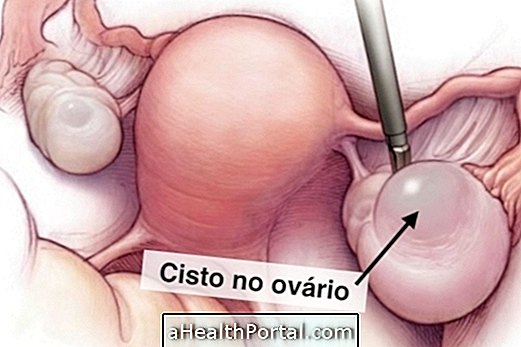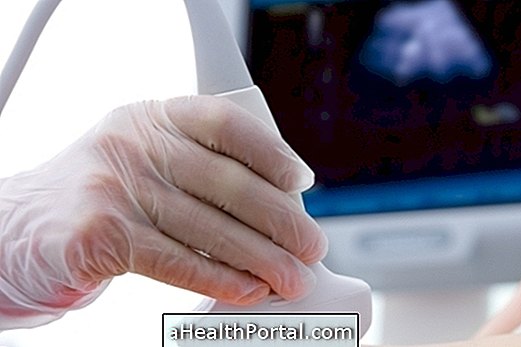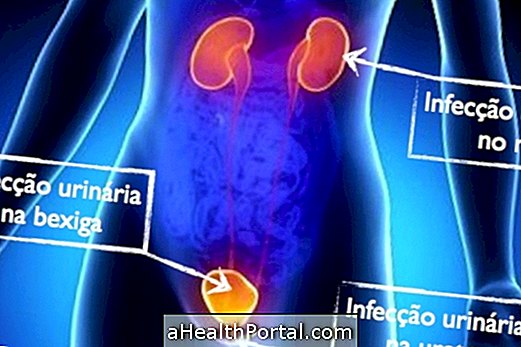Gynecological examinations are done with the aim of ensuring the well-being and health of the woman and should be requested by the gynecologist annually. They serve to diagnose or treat some diseases like endometriosis, HPV, vaginal discharge or bleeding out of the menstrual period.
It is recommended to go to the gynecologist at least once a year, especially after the first menstruation, even if there are no symptoms of illness. Going to the doctor is important to prevent diseases and to investigate symptoms that are apparently not serious.
The gynecologist is the best person to request gynecological exams. Through one or more exams, he can evaluate the woman's pelvic region, such as ovaries and uterus, and can detect some diseases early. In addition, you can identify the cause of the symptoms presented by the woman, such as pelvic pain, vaginal discharge or bleeding outside the menstrual period.


Some examples of exams that may be requested in the gynecological routine are:
1. Pelvic Ultrasonography
Imaging exam that allows observation of the ovaries and uterus, helping to detect early diseases such as polycystic ovaries, enlarged uterus, endometriosis, vaginal bleeding, pelvic pain, ectopic pregnancy and infertility.
Pelvic ultrasound is done by placing the transducer in the belly or inside the vagina, being called transvaginal ultrasound, which provides clear and detailed images of the female reproductive system. Know what it is and when to do the transvaginal ultrasound.
2. Papanicolau
A swab is made with a cotton swab inside the cervix to remove a small sample of cells that is analyzed in the laboratory to identify vaginal infections and changes in the vagina and uterus that may be indicative of cancer. The examination does not hurt, but there may be discomfort when the doctor scrapes the cells of the uterus.
The test should be done at least once a year and is indicated for all women who have already started sex life and those who have not yet but who are over the age of 21 years. Here's how to understand the results of the Pap smear.
3. Infectious screening
Infectious screening is done through a blood test and aims to identify infectious diseases such as candidiasis, herpes, HIV and syphilis.
4. Colposcopy
It allows the direct observation of the cervix and other genital structures, such as the vulva and vagina, and can identify benign cellular alterations, vaginal tumors and signs of infection or inflammation.
Colposcopy is usually ordered by the gynecologist on a routine examination, but also indicated when the Pap test had abnormal results. This test does not hurt, but it can cause some discomfort, usually burning, when the gynecologist applies a substance to see possible changes in the woman's uterus, vagina, or vulva. Learn how colposcopy is done.
Hysterosalpingography
Hysterosalpingography is an x-ray examination in which contrast is used to look at the cervix and fallopian tubes, identifying possible causes of infertility in women, and salpingitis, which is inflammation of the uterine tubes. See how the treatment is done for salpingitis.
This test does not hurt but may cause discomfort, and the doctor may prescribe the use of analgesics or anti-inflammatories before and after the test. Understand how hysterosalpingography is done.
6. Magnetic Resonance
It allows to observe, with good resolution, images of the genital structures for the detection of malignant alterations, such as fibroids and uterine and vaginal cancer. It is also used to monitor the changes that may occur in the female reproductive system, indicating whether or not there was a response to the treatment, besides indicating whether surgery should be performed or not.
It is a low-cost, easy-to-access exam that does not use radiation and contrast in the vein. Learn what magnetic resonance imaging works for and how it is made.
7. Diagnostic laparoscopy
Diagnostic laparoscopy, or videolaparoscopy, is an examination that through the use of a thin tube and with light, allows the visualization of the reproductive organs inside the abdomen, being able to identify endometriosis, ectopic pregnancy, pelvic pain and infertility.
Although this test is considered the best technique to diagnose endometriosis, it is not the first option because it is an invasive technique and requires general anesthesia, and transvaginal ultrasound or magnetic resonance imaging is more recommended. Learn all about diagnostic and surgical videolaparoscopy.
























